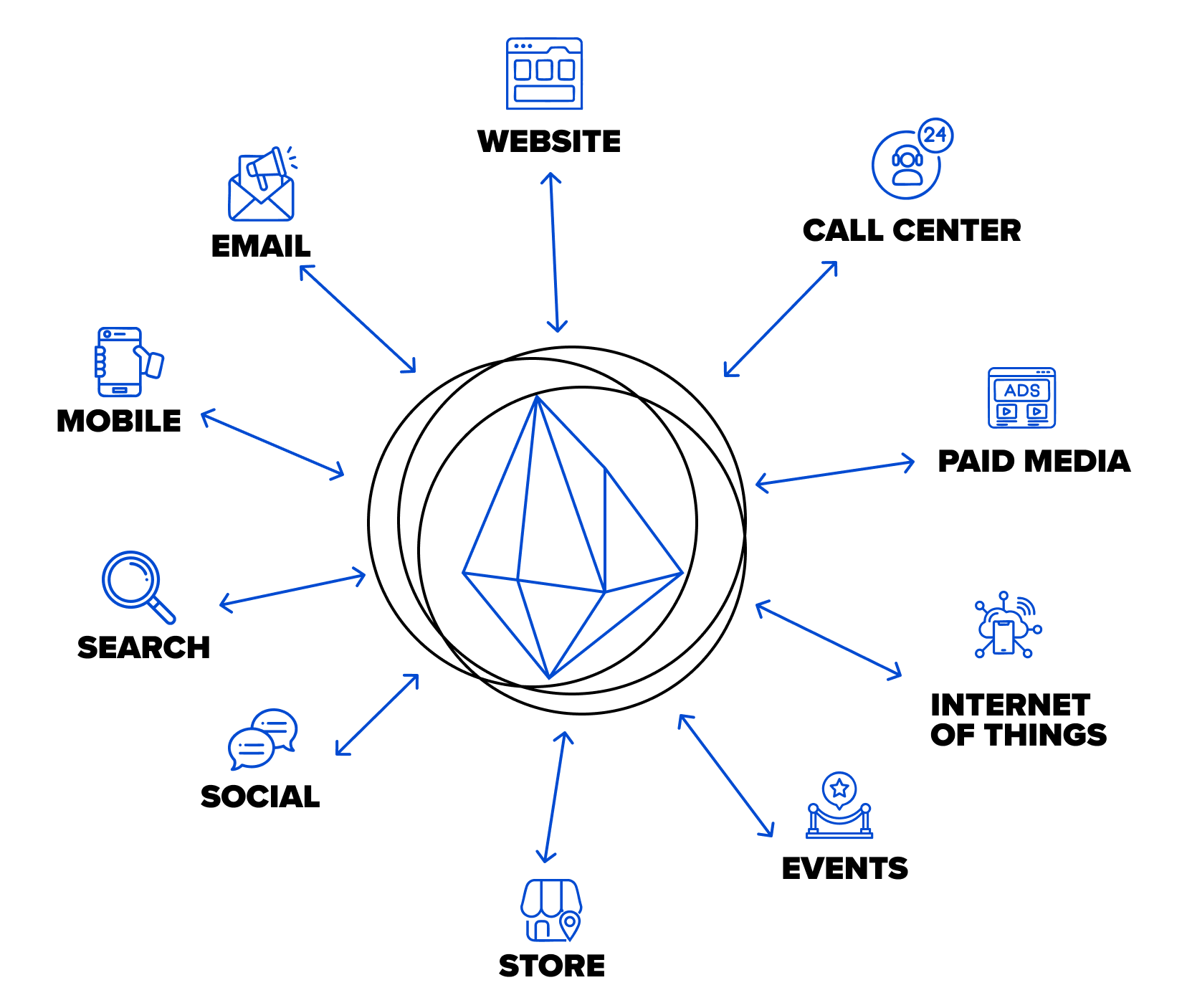
Phygital experience strategy
Retail has undergone a remarkable transformation, driven by the demands of digitally connected and ever-changing customers. The rise of omnichannel strategies is bridging the gap between online and offline shopping, creating seamless, customer-centric retail experiences. At the heart of this evolution is the concept of “phygital,” which merges digital and physical environments to deliver personalized, interactive journeys.
Phygital customer experience underscores the bold and inventive convergence of physical and online retail channels, where each influences the other in significant ways. Businesses must now seamlessly blend digital and physical touchpoints to create richer, more targeted interactions. Consumers can then navigate a variety of options, including in-store shopping, e-commerce, m-commerce, and s-commerce, while exploring innovations like voice search and virtual reality (VR) “try-before-you-buy" tools. These advancements are shaping the future of phygital shopping experiences and redefining how customers engage with brands.
In the midst of this change, retailers must adapt to digital demands or risk becoming obsolete. Many stores have embraced the “click-and-mortar” model, blending physical and digital channels to remain customer-centric. But what does it mean to be customer-centric in the phygital era? Customer-centric retail experiences are built on three key pillars:
- Immediacy: Delivering messaging and responses in real time based on customer interactions.
- Immersion: Engaging customers deeply, regardless of their preferred channel.
- Interaction: Activating both the physical and emotional aspects of the purchasing process.
To unify a customer’s physical and digital behavior, businesses must adopt phygital marketing solutions that seamlessly integrate these touchpoints. This requires advanced technology capable of capturing, processing, and analyzing vast amounts of customer data to provide personalized experiences across channels and devices.
CAPTURING THE DATA
Personalization is pivotal in retail. It allows businesses to offer services tailored to customers' unique preferences and behaviors. Bridging the gap between physical and digital worlds enhances customer experiences and fosters stronger emotional connections with a brand. By analyzing shopping habits, businesses engage customers with hyper-personalized messages delivered at the right time and place. Personalization considers factors such as preferred shopping locations, payment methods, and online activity, ensuring every interaction feels relevant and meaningful.
For instance, if a customer spends time browsing for headphones in-store but leaves without purchasing, why not follow up with a targeted email campaign offering a personalized discount? Such a data-driven strategy goes beyond a generic personalized email subject line to directly address the customer’s specific needs and increase the likelihood of conversion.
By continuing to focus on being data-driven, retailers implement a phygital experience strategy to access, collect, and ingest existing data into a centralized system, driving decision-making and creating personalized shopping experiences.
To incorporate insights from customers’ physical interactions, we have outlined key technologies that help extract context for each individual, enabling a highly personalized and connected omnichannel experience.

BEACONS
Beacons are small, wireless transmitters that use low-energy Bluetooth technology to connect with multiple interactive devices, enabling more accurate and seamless location-based searching and interactions. They are particularly useful in the following scenarios:

RFID technology enables products to be tagged within a physical environment. For instance, integrating RFID chips with smart mirrors, touch screens, or tablets allows customers to access detailed product information or even virtually “try-on” items.

RFID chips also streamline the checkout process by automatically scanning tagged products, saving time for customers. Additionally, the data collected during these interactions can be stored for future use, helping retailers deliver personalized experiences and foster customer satisfaction.
AI & QR CODES

By combining facial recognition, motion capture, sensors, QR codes, and artificial intelligence (AI), customers select items, scan QR codes using multiple interactive devices, and leave without going through a traditional checkout line.

Companies can also showcase products outside physical stores, enabling potential customers to browse and select items by scanning QR codes. Once scanned, the items are added to an online shopping cart and automatically shipped to the buyer’s address, offering a seamless shopping experience.

AI-powered chatbots further enhance customer engagement by answering questions, providing instant, personalized service, and suggesting products based on a customer’s digital profile, interests, and preferences across various channels and touchpoints.
AR/VR

Augmented reality (AR) enhances the physical customer journey by allowing users to scan or photograph products, which redirects them to the corresponding product page on the brand’s website for additional information or online purchasing.

Virtual reality (VR) takes this a step further by enabling customers to enjoy a fully immersive shopping experience without visiting a physical store. Wearing a VR headset, customers can explore virtual stores, browse products, and even make seamless online transactions through integrated payment platforms.
SoftServe helps businesses integrate AI, AR/VR, and other advanced tools, turning customer interactions into a smooth and innovative phygital experience. By enabling faster service, intuitive interfaces, and physical retail integration, brands can exceed customer expectations and build lasting loyalty.
Start a conversation with us
